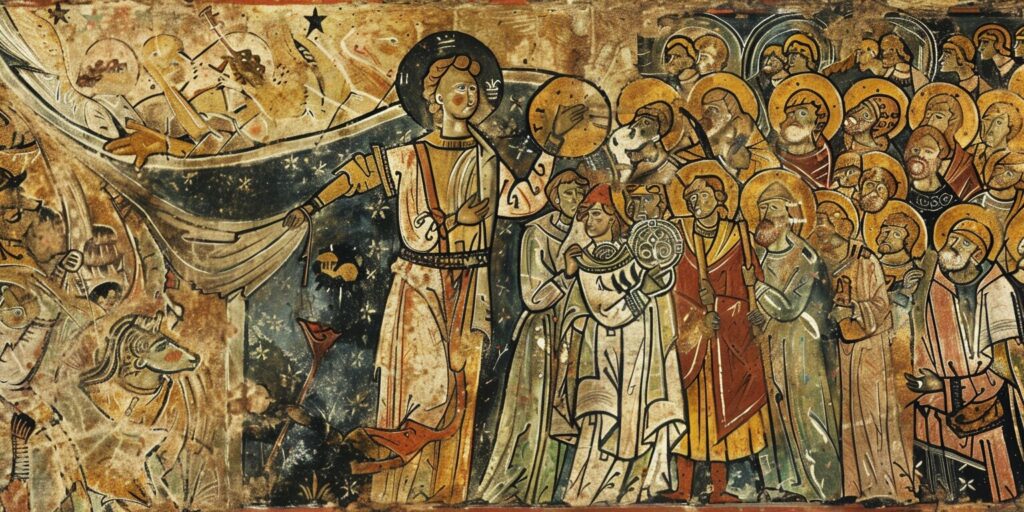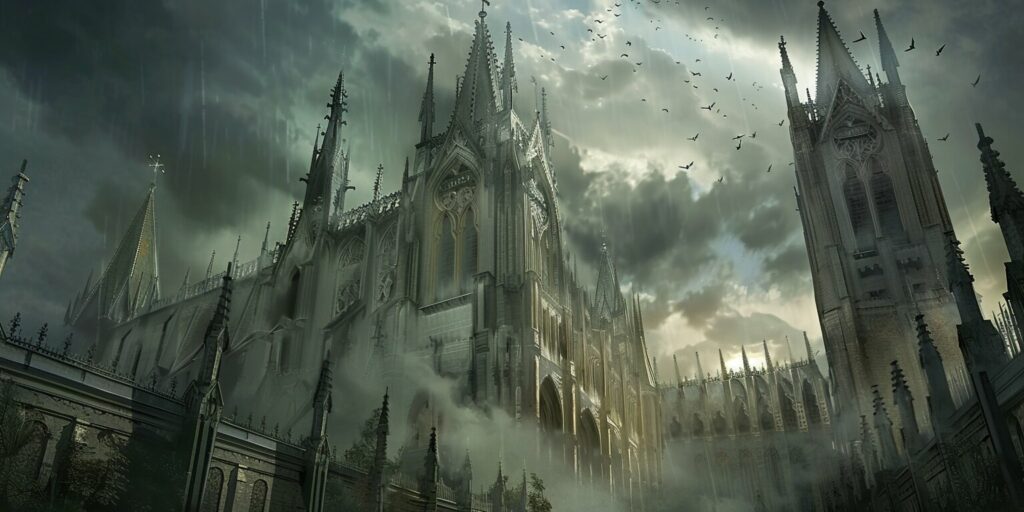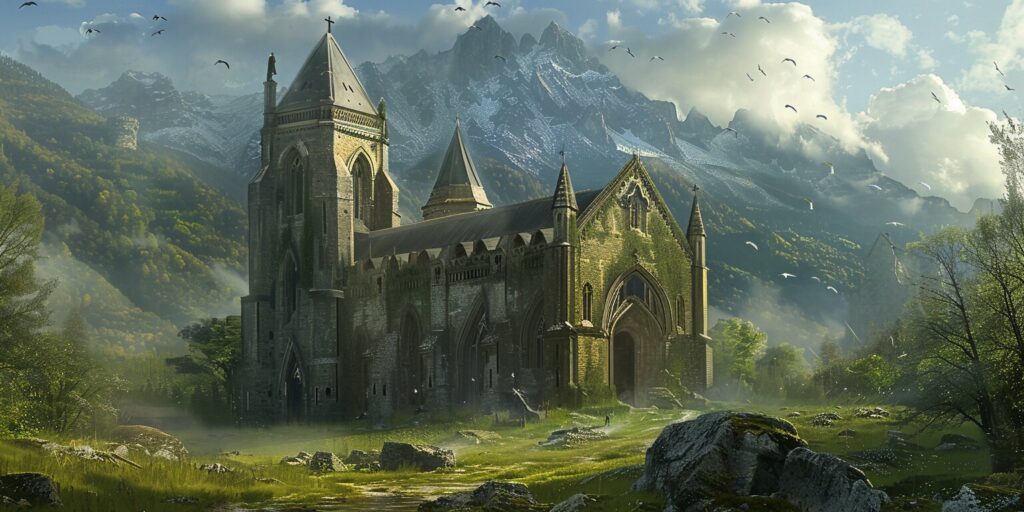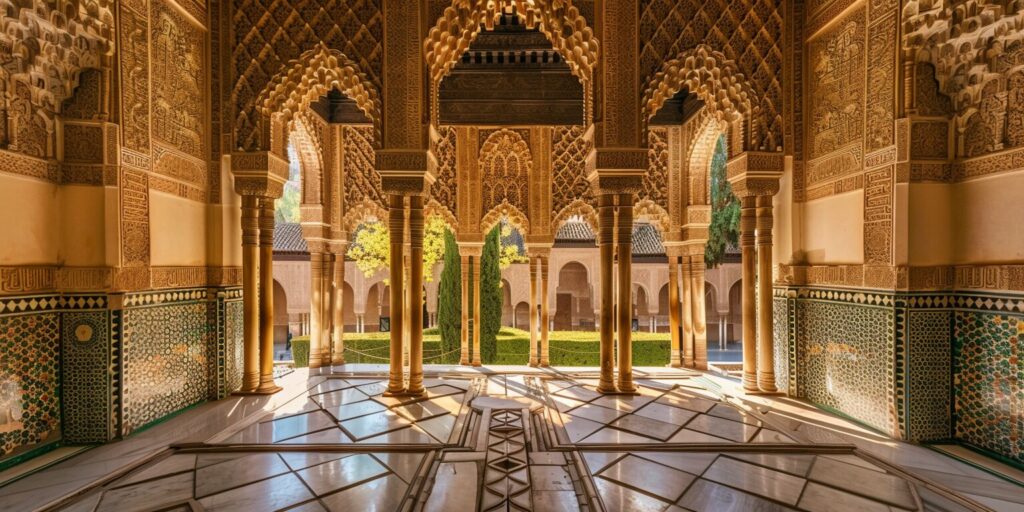Medieval art encompasses a vast and diverse range of artistic expressions that flourished during the Middle Ages, a historical period spanning from the 5th to the 15th century, marking an era that is central to the study of art history. From the majestic cathedrals of the Gothic era to the intricate illuminated manuscripts, medieval art reflects the profound influence of Christianity and the rich cultural heritage of Europe. This enchanting world of medieval art showcases a variety of styles, from the opulent Byzantine mosaics to the towering Gothic architecture, all of which have had a lasting impact on the development of Western art.
The medieval period saw the rise of numerous art movements and styles, each with its own distinct characteristics and cultural influences. Art historians and scholars have long attempted to classify medieval art into major periods, such as the Early Medieval, Romanesque, and Gothic eras, to better understand this artistic tradition’s evolution and diversity. This article will delve into the facts and fundamentals of these various medieval art styles, exploring the history, evolution, and defining features that make them unique.
Understanding Medieval Art
To fully appreciate the richness and diversity of medieval art styles, it’s important to understand their history, evolution, and the key characteristics that define this artistic tradition. From the majestic cathedrals of the Gothic era to the intricate illuminated manuscripts, medieval art reflects the profound influence of Christianity and the rich cultural heritage of Europe. Let`s explore facts about medieval art together.
History and Evolution of Medieval Art
So, what is medieval art? Medieval art encompasses a vast and diverse range of artistic expressions that flourished during the Middle Ages, a historical period spanning from the 5th to the 15th century. This era witnessed the transition from the classical traditions of the Roman Empire to the unique artistic styles that emerged across different regions of Europe, each shaped by the political, social, and religious forces of the time.
Main Characteristics of Medieval Art
The art produced during the medieval period primarily focused on religious themes and glorifying the Christian faith. Iconic works such as stained glass windows, mosaics, and frescoes were often commissioned for churches and cathedrals, serving as visual representations of biblical stories and religious teachings, becoming a pivotal part of art history. Additionally, medieval art was characterized by a distinct sense of symbolism, where objects and figures were used to convey deeper spiritual meanings.
Influence of Christianity on Medieval Art

The rise of Christianity profoundly impacted the development of medieval art, leading to the creation of iconic early Christian church art and laying the groundwork for the flourishing of medieval paintings in the late medieval period. Religious art became the dominant form of artistic expression, with Middle Ages artists drawing inspiration from the Bible, the lives of saints, and the Church’s teachings. This resulted in the creation of awe-inspiring architectural masterpieces, intricate illuminated manuscripts, and breathtaking religious paintings and sculptures that continue to captivate audiences today.
Different Styles in Medieval Art
Throughout the medieval period, various artistic styles and traditions emerged, each with its own distinct characteristics and cultural influences. Understanding these diverse styles is crucial to appreciating the depth and complexity of medieval art, a key aspect of art history that spans from the early Middle Ages through the late Middle Ages.
Byzantine Art: A Symbol of Opulence
The Byzantine Empire, centered in Constantinople (modern-day Istanbul), fostered a unique artistic tradition that was characterized by its lavish use of gold, intricate mosaics, and a focus on religious iconography. With its dazzling displays of wealth and power, Byzantine art became a symbol of the empire’s opulence and the Christian faith, embodying the splendor of decorative art during the early Middle Ages. The stunning Hagia Sophia mosaics and the Daphni Monastery’s magnificent murals are just a few examples of the breathtaking Byzantine art that captivated Europe during the medieval period, epitomizing the grandeur of decorative art in art history.
Early Christian Art: Portrayal of Beliefs
As Christianity spread across the Roman Empire, early Christian art forms emerged, reflecting the beliefs and teachings of the new religion and setting the stage for the rich traditions of Carolingian and Ottonian art. These artistic expressions, ranging from the catacombs of Rome to the illuminated manuscripts, often depicted scenes from the Bible, the lives of saints, and the symbolism of the Christian faith, illustrating the transition from Roman art to the distinctively spiritual art of the early Christian church. The use of symbolism, such as the cross, the fish, and the lamb, became a constant in early Christian art, conveying religious messages and strengthening the community’s faith.
Gothic Art: Magnificence in Architecture and Design

The Gothic art movement flourished in Western Europe during the 12th to 16th centuries and is best known for its magnificent cathedrals and intricate architectural designs. Gothic art was characterized by its soaring, light-filled structures, such as the Chartres Cathedral and the Notre Dame de Paris, which were adorned with elaborate stained glass windows, delicate tracery, and intricate sculptural elements. This style of art and architecture was a testament to the power and wealth of the Catholic Church during the medieval period, showcasing the profound influence of Christianity on the artistic expressions of the time.
Exploring Specific Periods
Within the broad scope of medieval art, specific periods and regional styles have emerged, each contributing unique artistic expressions and cultural influences, from Carolingian art to Ottonian art, marking the evolution of art through the early Middle Ages. From the transitional nature of the Early Medieval Period to the blend of Roman and Christian elements in Romanesque art and the distinct creations of Insular art, these distinct eras showcase the diversity and evolution of medieval artistic traditions.
The Early Medieval Period: A Transition in Art
The Early Medieval Period, spanning from the 5th to the 10th century, marked a pivotal transition in the world of medieval art. As the Roman Empire declined, the rise of Christianity and the emergence of new political powers led to a shift in artistic styles and themes. This era saw the incorporation of Christian iconography into existing artistic traditions, resulting in a unique synthesis that would lay the foundation for the following artistic expressions, including the development of Carolingian and Ottonian art.
Romanesque Art: Blend of Roman and Christian Styles
Romanesque art flourished from the 11th to the 12th century and is characterized by its blend of Roman and Christian influences. This artistic style is particularly evident in the architecture of Romanesque churches, which feature sturdy, rounded arches, thick walls, and decorative elements that evoke the grandeur of classical Roman structures. Romanesque art also embraced a range of mediums, including sculpture, metalwork, and illuminated manuscripts, all of which showcased the period’s fascination with the harmonious integration of diverse artistic traditions.

Insular Art: Unique Creations from Isolated Regions
Insular art, which developed in the isolated regions of the British Isles and Ireland during the Early Medieval Period, presents a distinctive artistic style deeply rooted in these areas’ unique cultural and geographic context. Characterized by intricate knotwork, spirals, and animal motifs, Insular art found expression in a variety of forms, from illuminated manuscripts to metalwork and stone carvings. The artistic creations of this period reflect the resilience and ingenuity of medieval artists who drew inspiration from their surroundings, creating a visual legacy that continues to captivate art enthusiasts today.
Examining Famous Examples
A rich tapestry of iconic artworks and architectural masterpieces emerged throughout the medieval period, each reflecting the era’s diverse artistic traditions and cultural influences. Examining these renowned examples provides a deeper understanding of medieval art’s enduring legacy.
The Bayeux Tapestry: A Historic Masterpiece
One of the most famous examples of medieval art is the Bayeux Tapestry, a magnificent 230-foot-long embroidered cloth that depicts the Norman Conquest of England in 1066. This remarkable work of art, created in the late 11th century, is a testament to the skilled craftsmanship and attention to detail that characterized medieval artistry, laying the groundwork for the decorative art and medieval paintings that would define the later medieval period. The Bayeux Tapestry’s intricate scenes, vibrant colors, and historical narrative make it a true masterpiece that has captivated audiences for centuries, and its significance is heralded in art history texts, including those of the Metropolitan Museum of Art.
Chartres Cathedral: Epitome of Gothic Architecture
The Chartres Cathedral, located in the town of Chartres, France, is widely regarded as one of the finest examples of Gothic architecture. Constructed in the 12th and 13th centuries, this magnificent structure boasts impressive stained-glass windows, ornate sculptures, and a harmonious blend of architectural elements that exemplify the Gothic style. The cathedral’s soaring spires, intricate buttresses, and awe-inspiring interior spaces have made it a beloved and influential landmark in the world of medieval art and architecture.
Alhambra Palace: Intricate Islamic Art

While much of medieval art was heavily influenced by Christianity, the Alhambra Palace in Granada, Spain, stands as a stunning example of Islamic art and architecture, showcasing the diverse cultural influences that permeate the study of art history. This 13th-century fortress and palace complex features intricate geometric patterns, graceful arches, and delicate calligraphy, reflecting the rich cultural heritage of the Moorish rulers who commissioned it. The Alhambra’s ornate decorations, serene courtyards, and elegant design have made it one of the most iconic and admired examples of medieval Islamic art, representing a significant chapter in the history of decorative art.
Conclusion
The enchanting world of medieval art is a tapestry of captivating styles, rich cultural influences, and enduring masterpieces. From the opulent Byzantine art mosaics to the towering Gothic architecture, the art produced during this period has had a profound and lasting impact on the development of Western European art and Western medieval art. As art historians attempt to classify the various forms of medieval art into major periods and styles, the complexity and diversity of this artistic tradition become increasingly apparent.
The early medieval art period witnessed a transition from the values of classical art, while the later Romanesque art and Gothic art styles showcased the constant evolution and adaptation of artistic techniques and aesthetics. Insular art from isolated regions further contributed to the rich tapestry of medieval art, highlighting the importance of regional and cultural influences on the development of this expansive artistic movement.
Whether marveling at the intricate illuminated manuscripts, the impressive cathedrals, or the stunning examples of precious metalwork, the art produced during the medieval era continues to captivate and inspire art enthusiasts, historians, and scholars alike. The enchanting world of medieval art remains a testament to Europe’s enduring creativity and cultural heritage, shaping the trajectory of later Western art for generations to come, making it an essential subject of study in art history.

